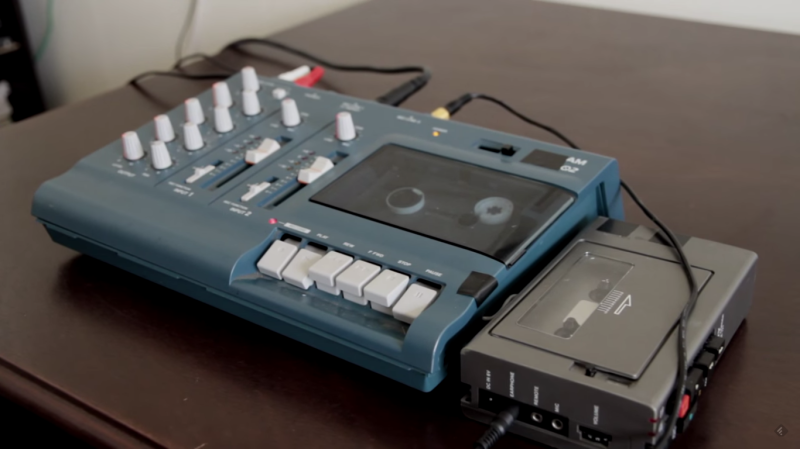A lot of digital processes are named after an old analog device that they’ve since replaced. It’s not uncommon to “tape” a show nowadays, for example, even though the recording work is actually done by a digital video recorder. Sometimes, though, the old analog devices have a certain je ne sais quoi that is desirable even in today’s digital world. This is certainly the case with [Dima]’s tape loop echo which is actually made with a physical tape loop.
The process of building the tape loop hardware is surprisingly non-technical. By positioning a recording head and a playback head right next to one another, a delay is introduced. An echo is created by mixing the original live sound signal with this delayed signal coming from the tape By varying the speed of the tape or altering several other variables, many different-sounding effects can be achieved.
Although in practice it’s not as simple as it sounds (the device required a lot of trial-and-error), the resulting effect is one that Pink Floyd or Beck would surely be proud of. Analog isn’t the only way to go though, there are plenty of digital effects that are easily created, and some with interesting mounting options as well.
















Cool! Keep experimenting and you may recreate Frippertronics from the early 70’s (No Pussyfooting, Evening Star etc). They (Fripp & Eno) used Revox A77s reel-to-reels. 2 machines, the physical separation+ips == the delay
Very Neat, but very limiting, with the tape loop so short. When I was in college we built up ‘proper’ tape loops in the electronic music studio by running the tape around mic stands scattered around the studio.
This is clever, but I’d like to have a longer delay/loop time, maybe clever placement of spindles inside the cassette tape area, in a zig-zag fashion.
But still, so simple it’s a very neat hack, thanks for sharing.
It’s really not so much a delay machine as an echo machine, for which a short tape is most appropriate. Back in the day (by which I mean the 1970’s and early 80’s) before digital playback was practical you could buy endless loop tapes of 30, 45, and 60 seconds at Radio Shack for use as the pickup message in telephone answering machines. Those generally also used a regular cassette to record the messages.
back in my day, we didn’t have solid-state random access memory modules, we had tape loop echos made with actual tape loops. and we didn’t have smartphones, we had rocks, and we liked it.
Without tension on the loop the dropouts are bad.
Yes, I’m working to fix that.. it’s sounding a lot better now than it did in the video, which was posted about a year ago. Then again, they’re only bad if you want to think of them as bad. :p
Fun proof of concept hack. Sorry about the usual array of ee dbags on HaD. You could build a thousand miles of highway and they would point out the grasshopper that looked at them askance as they traveled thru.
Keep on keepin on with your bad self.
A big fan of the Jamaican Sound System scene and the re-fined “Dub-Wise” genre. This is f’ing cool!
At 13yrs old I used the CD on the Stereo and a walkman headphone on a walkman to blast Engima and press the play button hard on the walkman that would slow the tape RPM’s.
The slowdown caused a ascending and descending crest in the track. *Audio Caramel Goodness*
Even though it’s old tech, as a would-be musician I get excited every time I see a four-track.
for a longer delay, couldnt you just shorten an 8-track tape? i mean they are already loops of a simillar length, could be shortened same but longer, no?
then again it’s 8track, wont suffice for modern music, maybe it needs hi-fi “cassette” tapes